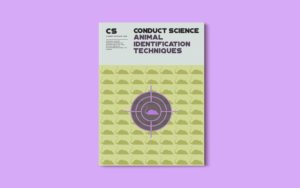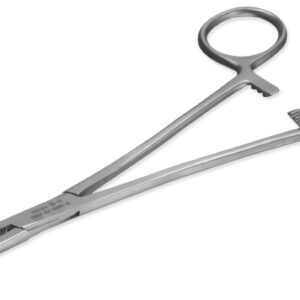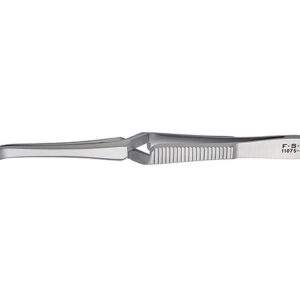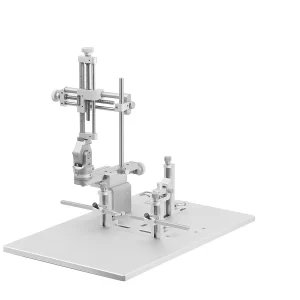As an Amazon Associate, ConductScience Inc. earns revenue from qualifying purchases
Introduction
Minor compounds, also known as “Minerals or Micronutrients”, are required by living organisms, in a small amount, for their growth and development. Depending on the concentration, that is required to perform a function in an organism, minerals are categorized into two groups[3]:
- Minerals are an integral part of living organisms; and are needed comparatively in a larger concentration than the other elements such as calcium, magnesium, phosphate, sodium, potassium, etc.
- Minerals are required in a very trace amount to perform a function in an organism. For example, copper and selenium.
The body of an organism is not capable of synthesizing these minerals, so the requirement is fulfilled by taking it from the diet. It is a point of major concern that the body should have an adequate amount of minerals available for proper functioning; the deficiency and excess of minerals lead to pathological conditions. For example, prolonged deficiency of calcium causes osteoporosis and cataract; whereas excess intake of calcium causes hypercalcemia that results in weakening of bones and improper functioning of the heart and brain. Histochemical techniques provide aid to study these diseases by the identification, and localization, of these minerals in tissues.
NOTE: ● The term “minor compounds” may refer to some other compounds, but here the term represents “body minerals”. ● Minerals = Minor compounds. |
This article introduces the techniques to demonstrate the histochemistry of minor compounds (minerals). However, not all minerals can be demonstrated by classical histochemical methods. Here, we discuss the demonstrable four minerals, which are: calcium, iron (masked and unmasked), zinc, and copper.
Methods to Demonstrate Histochemistry of Minor Compounds
As per the histochemistry of minor compounds, they exist in three forms[2], described below, in tissues:
- Diffusible ions: The diffusion property of the ions of the compounds makes it difficult to localize them by using histochemical techniques. For example, sodium, potassium, and chloride.
- Immobile salts: The compounds (or minerals) in this group are easily demonstrable. For example, calcium, magnesium phosphate, and iron in hemosiderin.
- Masked inorganic constituent: The compounds of this group are present in the tissue by forming a complex with some other protein or compound. Demasking is done before their demonstration by using acidic compounds. For example, iron in hemoglobin.
Before the demonstration of minor compounds, pretreatment of the sample tissue is done, to maintain its primary chemical nature, such as freezing, sectioning, and fixation of the tissue.
Fixation
Formaldehyde is used as a fixative for minor compounds, as they form cross-links between different reactive groups. The reaction with formaldehyde is reversible and cross-links can be hydrolyzed with prolonged washing with water. The use of acidic fixatives should be avoided as they can interfere with the histochemistry of minerals[2].
Demonstration of Calcium
Calcium salts (phosphates and carbonates) are the major constituent of teeth and bones. Abnormal depositions of calcium salts can be observed in the tissues associated with Gandy-Gamma bodies, Michaelis-Gutman bodies, and atheroma (in blood vessels). They are also present in the blood in a free ionic form, but histochemically, they can not be demonstrated[3].
The dyes that can stain Calcium salts are nuclear fast red, alizarin red S, naphthochrome green B, and purpurin.
Principle of staining: Calcium present in the tissue chelates with alizarin red S and forms a complex that gives an orange-red color to the tissue.
Requirement: Sample tissue (use frozen or paraffin section), (for fixation), 1% aqueous alizarin red S (by using 10% ammonium hydroxide, adjust the pH to 4.2 or 6.2-6.3), 0.05% fast green (prepared in 0.2% acetic acid), 95% alcohol, and distilled water.
Procedure:
- Deparaffinize the slide and hydrate it by using 95% alcohol.
- Air-dry the slides.
- Put the section in alizarin red S (filled in a Coplin jar) for 5 minutes.
- Rinse the section using distilled water.
- Counterstain the section with fast green for 1 minute.
- Rinse the section with distilled water in three changes.
- Dehydrate, clear and mount the section in synthetic resin[3].
Note:
- The amount of calcium in the tissue determines the staining time.
- This method is useful to detect and localize only a small amount of calcium, as in hypercalcinosis[3].
Observation: Calcium will be stained in an orange-red color and the background will be observed in green color.
This method is mainly used to stain and observe the mineral component in the bone.
Principle: When the tissue is treated with silver nitrate, the calcium present in the tissue is replaced by silver (silver deposition occurs) and it appears as metallic silver under the microscope.
Requirement: Sample tissue, 1% aqueous silver nitrate, 2.5% sodium thiosulfate, 1% safranin O (or van Gieson’s picro-fuchsin), and distilled water.
Procedure:
- Deparaffinize and hydrate the section with distilled water.
- Rinse the section in several changes by using distilled water.
- Put the section in silver nitrate solution by exposing it to strong light for 20-60 minutes.
- Rinse the section in several changes by using distilled water.
- Treat the section with 2.5% sodium thiosulfate for 5 minutes (to remove unreacted silver).
- Rinse in distilled water.
- Counterstain the section by using 1% safranin O (or van Gieson’s picro-fuchsin) for 5 minutes.
- Rinse in distilled water.
- Dehydrate, clear and mount the section[3].
Observation: Section containing calcium salts (or mineralized bone) will be observed in black color and osteoid will be stained in red color.
Demonstration of Iron
Iron is an essential component of living organisms. In tissues, they are bound with some other proteins by forming a complex such as hemoglobin, myoglobin, hemosiderin, and ferritin[2]. The localization and distribution of iron can be studied using methods like Perls’ Prussian Blue reaction and the Bathophenanthroline method.
- Perls’ Prussian blue reaction
This method is useful to visualize the masked iron in the tissues.
Fixation: The use of acid fixatives and chromates should be avoided, as they will interfere with the reaction.
Principle: Reaction with dilute HCl causes the unmasking of ferric iron in the form of ferric hydroxide. Then, the liberated ferric ions react with potassium ferrocyanide to give a Prussian blue-colored compound-ferric ferrocyanide.
Requirement: Sample tissue (section), potassium ferrocyanide, HCl, 0.5% aqueous neutral red (or 0.1% nuclear fast red), and distilled water.
Preparation of Ferrocyanide solution:
Mix 20 ml of 1% aqueous potassium ferrocyanide and 20 ml of 2% aqueous hydrochloric acid. Prepare the fresh solution before use.
Procedure:
- Wash the sections with water.
- Keep the section in the ferrocyanide solution for 10-30 minutes.
- Wash the section well by using distilled water.
- Stain with 0.5% aqueous neutral red for 2 minutes.
- Dehydrate, clear and mount the section in synthetic resin[3].
Observation: Ferric ions will be stained in blue color and nuclei will be observed in red color.
Note: The staining time varies depending on the number of ferric ions present in the tissue.
This method is useful to test the presence of unmasked iron in the tissues.
Principle: Reaction with dilute HCl liberates ferric ions that react with potassium ferricyanide to give a Turnbull’s blue-colored compound-ferric ferrocyanide.
Requirement: Sample tissue (section), Potassium ferricyanide, HCl, 0.1% aqueous nuclear fast red, xylene, synthetic resin, and distilled water.
Preparation of Ferricyanide solution
In 40 ml of 0.5% hydrochloric acid, add 400 mg of Potassium ferricyanide. Prepare the solution just before use.
Procedure:
- Wash the section well by using distilled water.
- Put the section in the potassium ferricyanide solution for 30 minutes.
- Wash the section well by using distilled water.
- Put the section in 0.5% nuclear fast red for 2 minutes to stain the nuclei.
- Rinse the section well by using distilled water.
- Dehydrate, clear by using xylene, and mount the section in synthetic resin[3].
Observation: Ferrous ions will be observed in dark Turnbull’s blue color and nuclei will be stained in red color.
This method can be useful to visualize both masked and unmasked iron.
Requirement: Sample tissue (section), Bathophenanthroline (4, 7-diphenyl-1, 10-phenanthroline), acetic acid, thioglycolic acid, 0.5% aqueous methylene blue, and distilled water.
Preparation of Bathophenanthroline solution:
Add 100 mg bathophenanthroline to 100 ml of 3% aqueous acetic acid at 60 °C for 24 hours. Cool the solution at room temperature, and then filter it in a bottle. (it can be used for 4 weeks).
Before using the solution add 0.5% thioglycolic acid.
Procedure:
- Wash the section well by using distilled water.
- Put the section in the bathophenanthroline solution at room temperature for up to 2 hours.
- Rinse the section well by using distilled water.
- Air-dry the slides containing the section.
- Dehydrate, clear and mount in synthetic resin[3].
Observation: Ferrous ions will be stained in red color and the nuclei will be stained in blue color.
Demonstration of Zinc
Zinc is a constituent of many enzymes and hormones in the living organism, such as insulin, superoxide dismutase, carboxypeptidases, and carbonic anhydrase[2]. The dithizone-acetone method is the only effective histochemical technique known to demonstrate zinc in tissues.
Principle: When the tissue is treated with a dithizone-acetone solution, the zinc ion present in the tissue chelates with the dithizone, giving a rose-red color to the tissue.
Requirement: Sample tissue (section), Dithizone-acetone solution, zinc-free water, Karo syrup, and distilled water.
Preparation of Dithizone-acetone solution
Make 0.01% Dithizone in absolute ethanol.
Store it in a dark brown bottle in the refrigerator.
Before using the solution dilute it in zinc-free water in a 15:1 ratio. The solution after dilution will be green in color.
Procedure:
- Wash the section by using distilled water.
- Put the section in the dye (Dithizone-acetone solution) for 5-10 minutes until the yellow color is observed.
- Drain off the excess dye from the section.
- Wash the section well by using chloroform.
- Drain the chloroform and wash the section using distilled water.
- Dehydrate, clear and mount the slide in Karo syrup[1].
Observation: Red to purple colored granules will be observed that will represent the presence of zinc in the section. The background will be observed in yellow to pink color.
Demonstration of Copper
Copper plays many roles in living organisms such as the maintenance of healthy bones, blood vessels, and nerves, and it also helps in the proper functioning of the immune system. It is also a major constituent of enzymes. For example, nitrogen oxide (NOx) reductases, and mono- and dioxygenases. Histochemical demonstration of copper is done by using rubeanic acid (dithiooxamide), the zinc or sodium salt of diethyldithiocarbamate (DDTC), and rhodamine.
Requirement: Sample tissue (section), 0.1% rubeanic acid (dithio-oxamide), 10% aqueous sodium acetate, 70% ethyl alcohol, 0.5% aqueous neutral red (or 0.1% aqueous nuclear fast red), xylene, synthetic resin, and distilled water.
Preparation of Rubeanic-acetate solution
Add 5 ml of 0.1% rubeanic acid (prepared in absolute ethyl alcohol) to 100 ml of 10% aqueous sodium acetate. Mix the solution well.
Prepare the solution just before performing the experiment.
Procedure:
- Wash the section well by using water.
- Put the section in the rubeanic-acetate solution (filled in a Coplin jar) for 16 hours at 37 °C.
- Wash the section well with 70% ethanol.
- Rinse the section well by using distilled water.
- Blot-dry the section.
- Counterstain the section with 0.5% aqueous neutral red (or 0.1% aqueous nuclear fast red) for 2 minutes.
- Dehydrate the section with xylene, clear it, and mount it in synthetic resin[3].
Observation: Copper will be observed in greenish-black color and nuclei will be stained in pale red color.
- Modified rhodanine technique
Requirement: Sample tissue (section), 5-(p-Dimethylaminobenzylidene) rhodanine, sodium acetate trihydrate, Disodium tetraborate, Lillie-Mayer stain, absolute ethanol, and distilled water.
Preparation of Solutions
Rhodanine stock solution
Add 0.05 g of 5-p-Dimethylaminobenzylidene-rhodanine in 25 ml of absolute ethanol and filter the solution.
Prepare the solution fresh for use.
Working solution
To the 5 ml of rhodamine stock solution, add 45 ml of 2 % sodium acetate trihydrate.
Borax solution
Add 0.5 g disodium tetraborate to 100 ml distilled water.
Procedure:
- Wash the section with water.
- Put the section in the rhodamine working solution for 3 hours at 56 °C or alternatively at 37 °C in the oven.
- Rinse the section by using distilled water for 3 minutes.
- Stain the section in the Lillie-Mayer stain for 10 seconds.
- Rinse the section well in distilled water.
- Transfer the section to the borax solution for 15 seconds.
- Rinse the section well by using distilled water.
- Dehydrate, clear and mount the section[3].
Observation: Copper accumulation will be observed in red to orange-red color and nuclei will be stained in blue color.
Application of Histochemical Demonstration of Minor compounds
The techniques to demonstrate the histochemistry of minor compounds has a major application in research and medical laboratories. As these techniques are easy and produce quick results, they are used to examine the disease and study different pathological conditions. These methods help in the identification, localization, and demonstration of minerals. Some of the applications where the described histochemical techniques can be used are given below:
- Michaelis-Gutman bodies (or Malakoplakia): These are basophilic inclusions structure that contains calcium and iron. This condition arises due to the inadequate killing of bacteria that accumulates in monocytes and macrophages and leads to the accumulation of calcium. These can be histochemically demonstrated by calcium-demonstrating techniques.
- Atherosclerosis: In this condition, the arteries get hardened and narrowed due to the accumulation of calcium. The functioning of the heart is disturbed due to the obstruction in blood flow.
- Hemochromatosis: This condition is also known as “iron overload”. In this condition, excess iron is absorbed by the intestine and gets accumulated in different organs (like joints, heart, and pancreas) and damages them. It’s a rare, genetic disorder[3].
- Hemosiderosis: This disease is caused due to the accumulation of the excess amount of hemosiderin in the organs like the spleen, liver, and bone marrow[3].
- Wilson’s disease: This is a rare, genetic disorder due to the excessive deposition of copper in the liver, eye, and basal ganglia of the brain. In the eye, a brown ring of copper can be observed[3].
- Primary biliary cirrhosis: In this pathological condition, there is increased retention of copper in the liver that leads to liver malfunction and duodenal ulcers.
Conclusion
Minerals (or Minor compounds) are inorganic compounds that are required in trace amounts for the proper functioning of the body of a living organism. The requirement of the minerals is fulfilled by their intake through diet. The body should have an adequate amount of minerals, as either the deficiency or excess of minerals leads to pathological conditions like Wilson’s disease, hemosiderosis, and atherosclerosis. The identification and localization of minerals, responsible for causing disease, can be done by using histochemical techniques to examine various diseases.
References
- Mager Milton, Jr. McNary F. William, Lionetti Fabian (1953). The Histochemical Detection of Zinc. Journal of Histochemistry and Cytochemistry, 1(6), 493-504. DOI: https://doi.org/10.1177/1.6.493.
- Lyon Hans (1991). Theory and Strategy in Histochemistry: A Guide to the Selection and Understanding of Techniques (1st edition), Berlin, Springer.
- Suvarna S. Kim, Layton Christopher, Bancroft John D., (2013). Bancroft’s Theory and Practice of Histological Techniques (7th edition), Elsevier, Churchill Livingstone.












